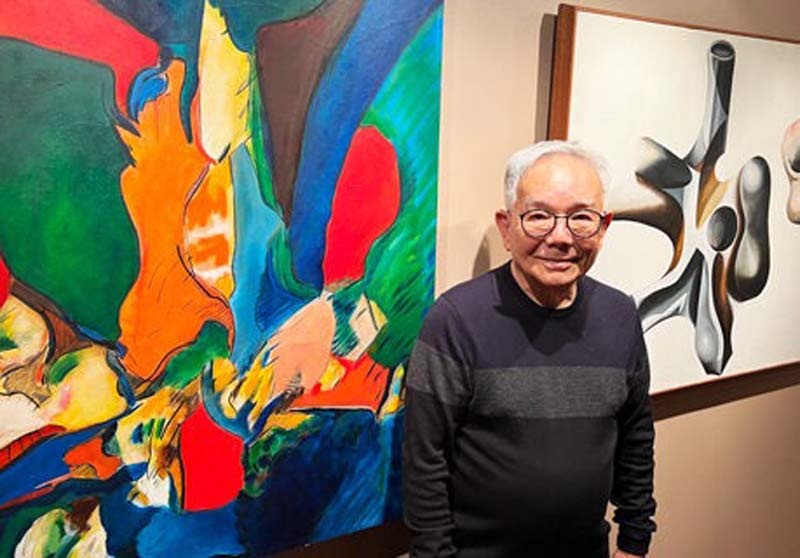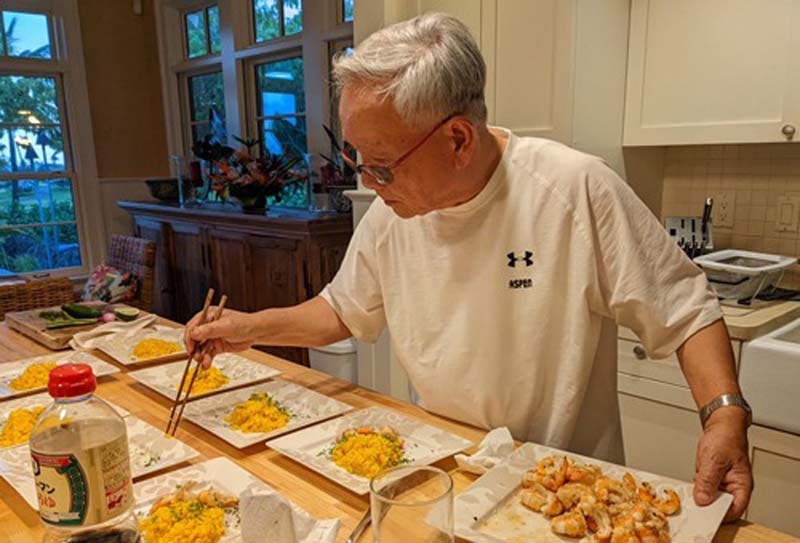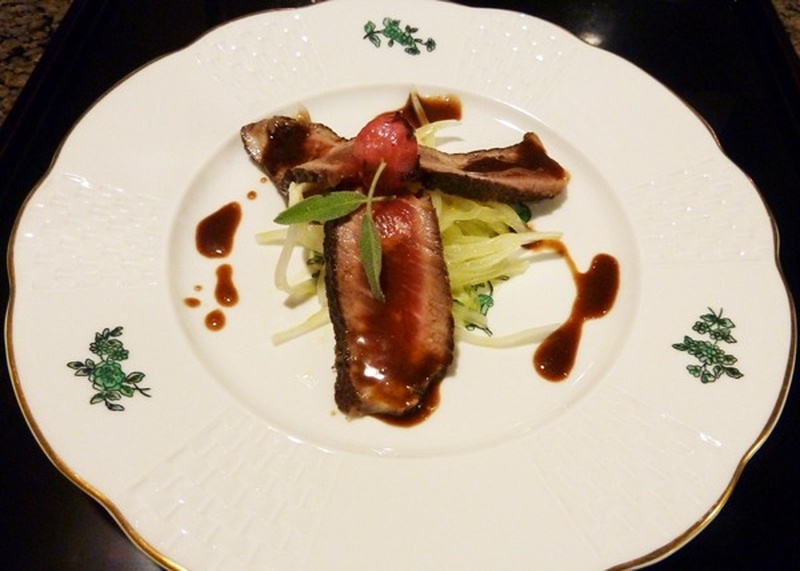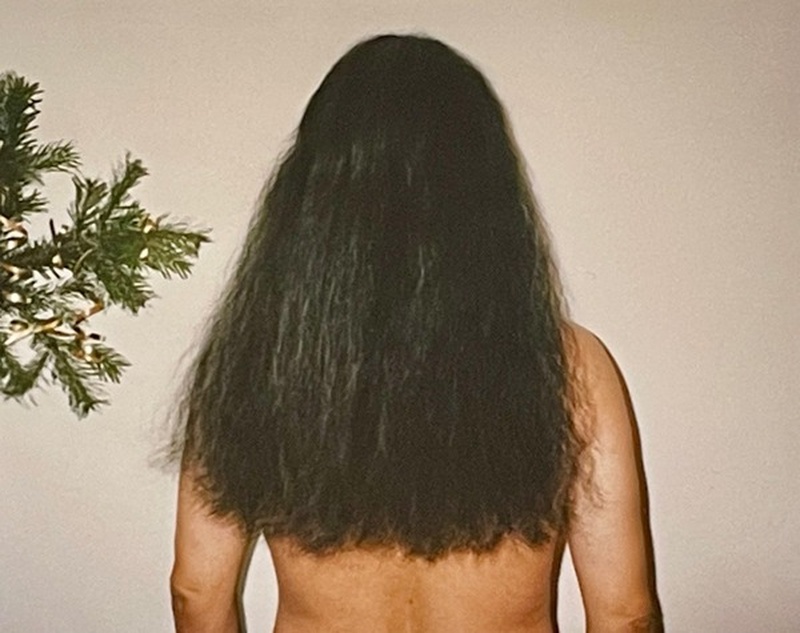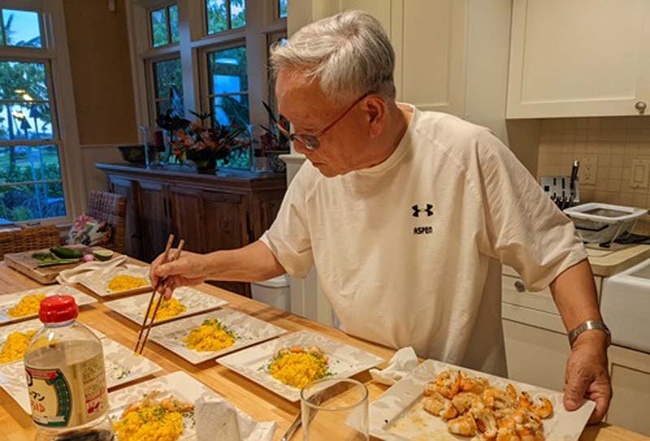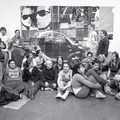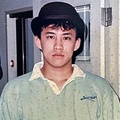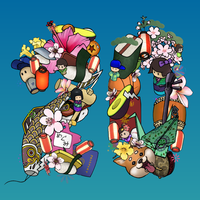It has been 60 years since he crossed the ocean at the age of 22 to become a painter. Once a young man drawn to avant-garde art, he became an art historian, and now, 20 years after leaving the teaching profession, he has found a new realm in "enjoying life." Kawasaki Kazuhiro, occasionally using English to talk about his insatiable passion for beauty, overflows with his gentle smile and passion for art.
He moved to Tokyo penniless and became interested in avant-garde art.
In his home, Kazuhiro Kawasaki (hereafter referred to as Hiro) has neatly arranged paintings that he has collected over 40 years. The artworks, which are from different eras and styles, are a diverse range of genres, including powerful abstract paintings that seem to draw you in, delicate lithographs (stone prints) by French painters, pop art, works by painters he knows and his former students, ukiyo-e, and even a bamboo flower vase by a Japanese artist living in the United States, which is his favorite. It is his daily routine to interact with the abstract paintings that hang in front of the sofa while reading in the living room.
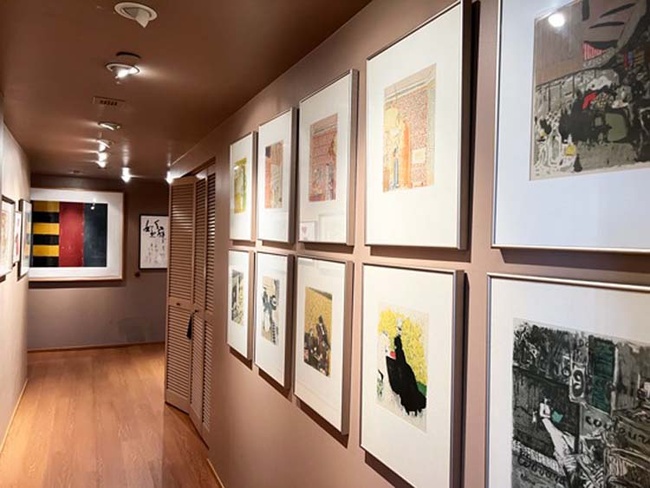
The potted plants that fill one corner of the living room look lively, bathed in soft light. There is also a moss-covered small garden on the balcony. For Hiro, cooking and serving guests the vegetables he is proud of, which he grew himself in a nearby field, is a blissful moment. "Dilettantes bring me joy."
A dilettante is someone who enjoys art as a hobby, based on their own aesthetic sense. That's exactly what Hiro is like now. The painting he bought with his first paycheck was by a Spanish artist and cost $300 at the time. It was no small purchase. "The price isn't an issue. What's most important is how much it enriches my daily life." Art is Hiro's bread and butter in life.
When he was young, Hiro was completely engrossed in avant-garde art. He says, "I felt something exciting about the free and future-oriented method of expression." His first encounter with avant-garde art was in 1961, a time when Tokyo was buzzing with excitement ahead of the Olympic Games. Hiro enrolled in the Faculty of Medicine at Kyushu University, but dropped out within three months. During an anatomy class, he cut a scalpel into an anesthetized rabbit, and fainted when he saw it twitch. He was so ashamed that he couldn't face his parents, and headed to Tokyo, practically disowned. In a converted warehouse in the downtown area of Fukagawa, Hiro began living with strangers who were also engrossed in avant-garde art.
Hiro was also greatly influenced. There is a scene that remains etched in his memory. He was invited by his roommate to an overpass overlooking the newly opened Shuto Expressway. There, a woman in a pure white wedding dress was sitting. Around the hem of the dress, a pair of dressmaking scissors were placed in an arc, with a note attached: "To all passersby. Please use these scissors to cut the hem of your dress and take the scraps home with you." Hiro did not hesitate to carry out the request. It was later discovered that the woman in question was Yoko Ono, but there was no way to confirm this now.
Hiro says he will never forget the strange tension he felt when he cut that delicate lace fabric. "Tokyo was interesting at the time. Avant-garde art, known as Neo-Dada and Fluxus, was thriving in Japan as well." At the solo exhibition, he rented out a room in the Imperial Hotel, and when he opened the door, copies of banknotes were pasted all over the room. Copying banknotes is illegal, but he laughs without a care, saying, "Well, that's what avant-garde art is all about."
While changing jobs one after another, he was poor but fulfilled, working as an illustrator for a fashion designer. One day, he received a letter from his father. "You probably haven't done much in Tokyo. An American friend of mine is coming to Japan for a business meeting, so accompany him." That was an order from his father. He was also given a tip, so he had no reason to refuse.
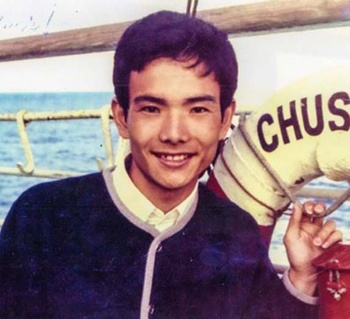
When Hiro told him that he wanted to be a painter, he was invited to Seattle to study art. So in 1965, Hiro boarded a British passenger ship and set off for Seattle via Vancouver. He was 22 years old. Four years had passed since he left his hometown.
When he returned to his parents' home in Miyazaki to say goodbye, his father said, "I thought that was how it would go." So Hiro set foot on American soil, studied at Shoreline Community College for a year, then transferred to the University of Washington. He decided to pursue a career as an oil painter.
Continued >>
*This article is reprinted from " Soy Source " (April 10, 2024).
© 2024 Keiko Miyako Schlegel


